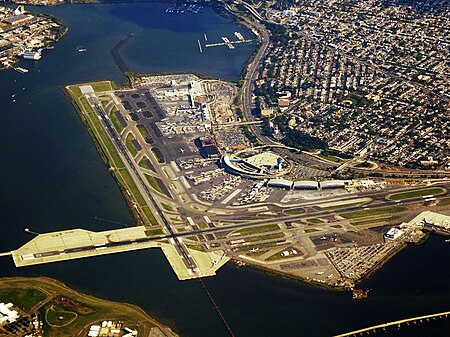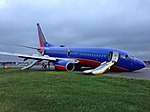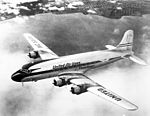LaGuardia Airport

LaGuardia Airport (IATA: LGA, ICAO: KLGA, FAA LID: LGA) is a civil airport in East Elmhurst, Queens, New York City. Covering 680 acres (280 ha) in its present form, the facility was established in 1929 and began operating as a public airport in 1939. It is named after former New York City Mayor Fiorello La Guardia. The airport primarily accommodates airline service to domestic (and limited international) destinations. As of 2019, it was the third-busiest airport in the New York metropolitan area behind John F. Kennedy and Newark airports, and the twenty-first busiest in the United States by passenger volume. While the airport is a hub for both American Airlines and Delta Air Lines, commercial service is strictly governed by unique regulations including a curfew, a slot system, and a "perimeter rule" prohibiting most nonstop flights to or from destinations greater than 1,500 miles (2,400 km).Throughout the 2000s and 2010s, LaGuardia was notable for having obsolete and dirty facilities, inefficient air operations, and poor customer service metrics. Responding to these criticisms, the Port Authority of New York and New Jersey (PANYNJ) in 2015 announced a multibillion-dollar reconstruction of the airport's passenger infrastructure, which is expected to be complete by 2025.
Excerpt from the Wikipedia article LaGuardia Airport (License: CC BY-SA 3.0, Authors, Images).LaGuardia Airport
Bowery Bay Boulevard, New York Queens
Geographical coordinates (GPS) Address Website External links Nearby Places Show on map
Geographical coordinates (GPS)
| Latitude | Longitude |
|---|---|
| N 40.775 ° | E -73.875 ° |
Address
LaGuardia Airport (LGA)
Bowery Bay Boulevard
11371 New York, Queens
New York, United States
Open on Google Maps








